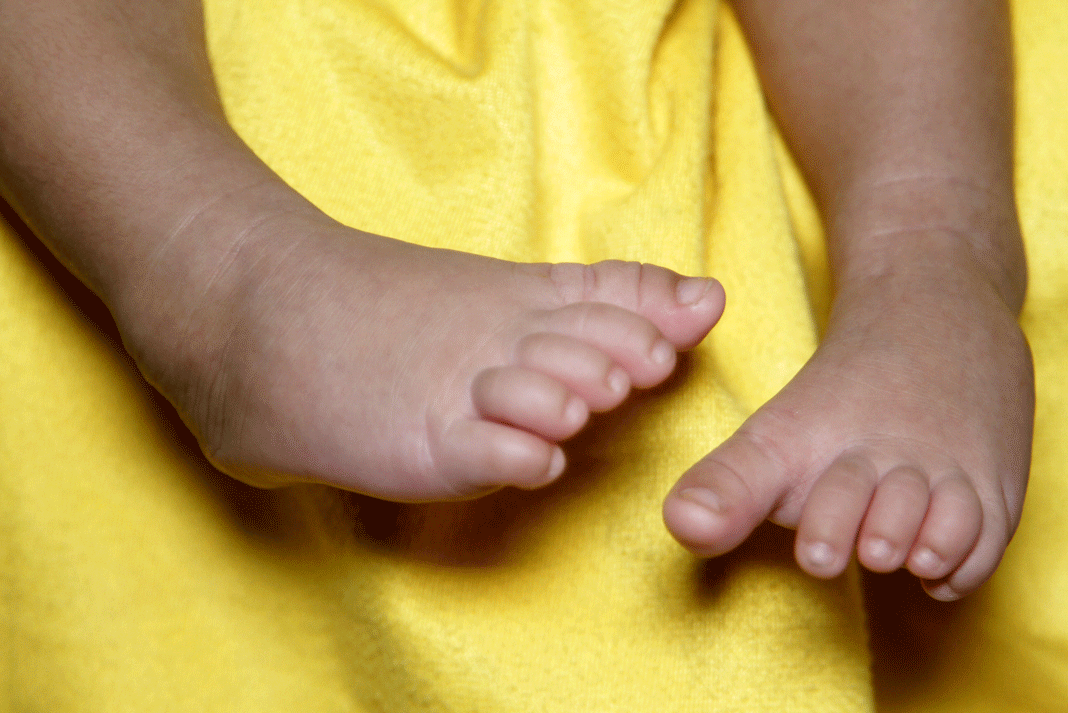DHAKA, More than half a million children in Bangladesh could be suffering from rickets, a debilitating disease associated with poor nutrition and lack of sunlight, according to a recent survey.
The National Rickets Survey 2008 based its estimate on its finding that 197 out of 20,000 children (0.99 percent) had rickets. The survey, the first of its kind in Bangladesh, estimated that 550,000 children aged 1-15 could be suffering from the disease. “Rickets is a softening of bones in children. It can lead to fractures and deformity. It is caused by the deficiency of Vitamin D and calcium. Children suffering from malnutrition are the primary victims of rickets,” A.K.M. Azad Choudhury, a leading child care specialist, told IRIN.
Rickets, which affects bone growth and results in gross deformities, is usually associated with a lack of sunlight and its appearance in Bangladesh is unexpected, according to scientists based at Cornell University, who first studied the disease in the region in the late 1990s. They found that calcium deficiency among children in Bangladesh is somehow exacerbated by either soil or water conditions, or poor nutrition, or a combination of these.
The 2008 survey was conducted jointly by Rickets Interest Groups of the International Centre for Diarrhoeal Diseases and Research, Bangladesh (ICDDR,B), CARE Bangladesh, the UN Children’s Fund (UNICEF), and the government’s National Nutrition Programme.
ICDDR,B experts say in the survey: “We do not yet fully understand the relative contribution of environmental, biological and dietary factors in Bangladesh that lead to such a high proportion of rickets.” They have called for further study and research.
[/fusion_text][/fusion_builder_column][/fusion_builder_row][/fusion_builder_container][fusion_builder_container hundred_percent=”no” equal_height_columns=”no” hide_on_mobile=”small-visibility,medium-visibility,large-visibility” background_position=”center center” background_repeat=”no-repeat” fade=”no” background_parallax=”none” enable_mobile=”no” parallax_speed=”0.3″ video_aspect_ratio=”16:9″ video_loop=”yes” video_mute=”yes” overlay_opacity=”0.5″ border_style=”solid” padding_top=”20px” padding_bottom=”20px”][fusion_builder_row][fusion_builder_column type=”1_2″ layout=”1_2″ spacing=”” center_content=”no” hover_type=”none” link=”” min_height=”” hide_on_mobile=”small-visibility,medium-visibility,large-visibility” class=”” id=”” background_color=”” background_image=”” background_position=”left top” background_repeat=”no-repeat” border_size=”0″ border_color=”” border_style=”solid” border_position=”all” padding=”” dimension_margin=”” animation_type=”” animation_direction=”left” animation_speed=”0.3″ animation_offset=”” last=”no”][fusion_text]
But the survey found that children with rickets drank very little milk, a rich source of calcium. Rickets can cause permanent deformities like bowlegs, pigeon breast, and knock-knees. The disease was first reported in Bangladesh by Social Assistance and Rehabilitation of the Physically Vulnerable (SARPV), an NGO, in 1991 in Chakaria, a sub-district of Cox’s Bazaar, a southeastern coastal town.
Prevention
A meeting of international experts on rickets held in Dhaka in 2006 identified community-based awareness as one of the most effective measures against the spread of rickets. Experts at the meeting said efforts to boost rice production over the years had influenced diets: there was less emphasis on calcium-rich foods such as dairy products and leafy green vegetables.
To prevent rickets, health experts recommend a child should be breast-fed up to the ninth month, then weaned and put on to cow’s milk and other foods rich in vitamin D and calcium, like eggs and dairy products such as butter, leafy vegetablesand small fish.
Calcium supplements such as lime can also be added to staple foods like rice and bread. Plenty of sunlight, fresh air and exercise are also necessary to ensure sufficient Vitamin D intake.
ao/jk/cb source.www.irinnews.org
[/fusion_text][/fusion_builder_column][fusion_builder_column type=”1_2″ layout=”1_2″ spacing=”” center_content=”no” hover_type=”none” link=”” min_height=”” hide_on_mobile=”small-visibility,medium-visibility,large-visibility” class=”” id=”” background_color=”” background_image=”” background_position=”left top” background_repeat=”no-repeat” border_size=”0″ border_color=”” border_style=”solid” border_position=”all” padding=”” dimension_margin=”” animation_type=”” animation_direction=”left” animation_speed=”0.3″ animation_offset=”” last=”no”][fusion_table]
Rickets is recognized as a nutritional disease “heavily conditioned by the micro environment” in which the affected individual lives, according to a World Health Organization (WHO) series onNutrition in Preventive Medicine
The cause of rickets in a person is determined on the basis of the person’s nutritional history.
The prevention of rickets, which was first diagnosed by the English bonesetter Rickets in about 1620, has been successful in developed countries, where most children drink milk or take vitamin D supplements, according to WHO.
However, it notes that in developing countries the problem has been complicated by factors such as climate, the socio-economic situation and nutritional and living habits.

